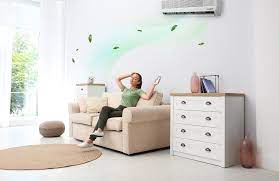HVAC systems, short for Heating, Ventilation, and Air Conditioning, are designed to regulate and maintain a comfortable indoor temperature while also ensuring air quality. While HVAC systems can help circulate fresh air into a building, whether or not they bring in fresh air depends on the type of system and how it’s designed.
The primary purpose of HVAC systems is to control the temperature, humidity, and air quality in a building, which can be accomplished through a variety of methods. One common method is to use a central air conditioning system that recirculates air throughout a building using ductwork. In these systems, air is pulled from the inside of a building, cooled or heated, and then distributed back into the building through vents or ducts. While these systems can help circulate fresh air, they do not typically bring in outdoor air.
However, many modern HVAC systems are designed to incorporate fresh air ventilation, which can help improve indoor air quality. Fresh air ventilation systems are designed to bring outdoor air into a building and distribute it through the HVAC system. This is typically accomplished through the use of mechanical ventilation systems, which use fans or blowers to draw in outdoor air and distribute it throughout a building.
There are several types of mechanical ventilation systems commonly used in HVAC systems, including:
Exhaust-only ventilation: In this type of ventilation system, stale indoor air is forced out of a building through vents or fans, and fresh air is drawn into the building through natural openings like windows and doors.
Supply-only ventilation: This type of ventilation system works by drawing fresh outdoor air into a building through a dedicated vent or duct, while stale indoor air is expelled through natural openings.
Balanced ventilation:
This type of ventilation system is designed to provide. A balance between fresh air and stale air by using a combination of supply and exhaust vents or ducts. These systems are typically designed to maintain a neutral pressure balance within the building to ensure. That fresh air is distributed evenly throughout the space.
Energy recovery ventilation:
This type of ventilation system is designed to maximize energy efficiency by using a heat exchanger to transfer heat. And humidity between incoming and outgoing air streams. This allows the system to reduce the amount of energy required to condition incoming air. While also ensuring that fresh air is distributed throughout the building.
In addition to these mechanical ventilation systems. HVAC systems may also incorporate other features designed to improve indoor air quality. Such as air filtration systems or UV lights. Air filtration systems work by removing contaminants from the air, such as dust, pollen, and other allergens, while UV lights can help kill viruses and bacteria that may be present in the air.
It’s worth noting that while HVAC systems can help improve indoor air quality. They are not a substitute for good indoor air management practices. To maintain good indoor air quality, it’s important to ensure that buildings are properly ventilated. That sources of indoor air pollution are properly managed or eliminated. This may include things like using low-emitting building materials and avoiding the use of harsh chemicals or cleaners. And ensuring that building occupants are properly educated about good indoor air quality practices.
In conclusion,
HVAC systems can bring fresh air into a building, but whether or not. They do depends on the type of system and how it’s designed. Many modern HVAC systems are designed to incorporate fresh air ventilation, which can help improve indoor air quality. But it’s important to note that HVAC systems are not a substitute for good indoor air management practices. To maintain good indoor air quality, it’s important to ensure that buildings are properly ventilated and. That sources of indoor air pollution are properly managed or eliminated.

